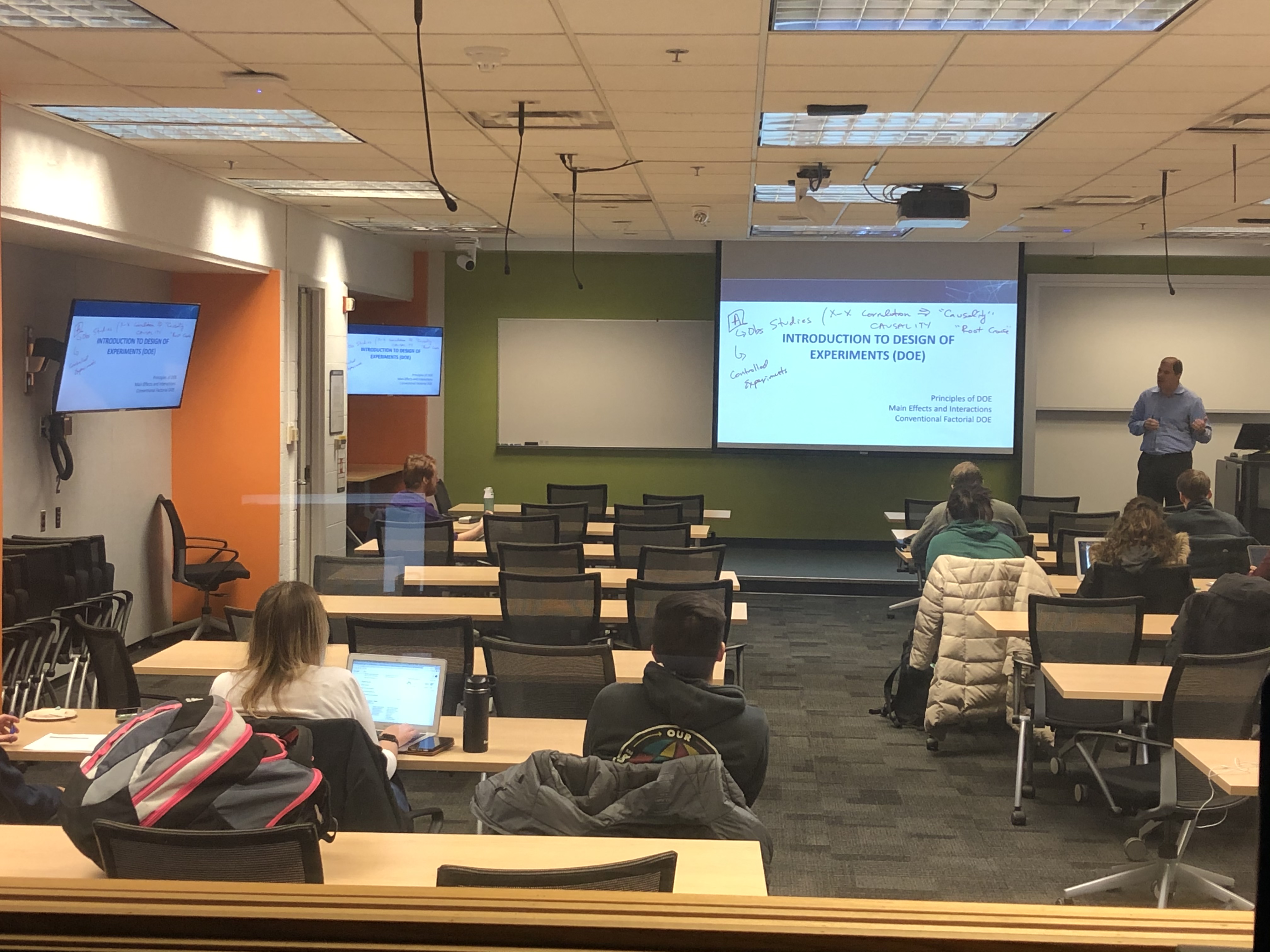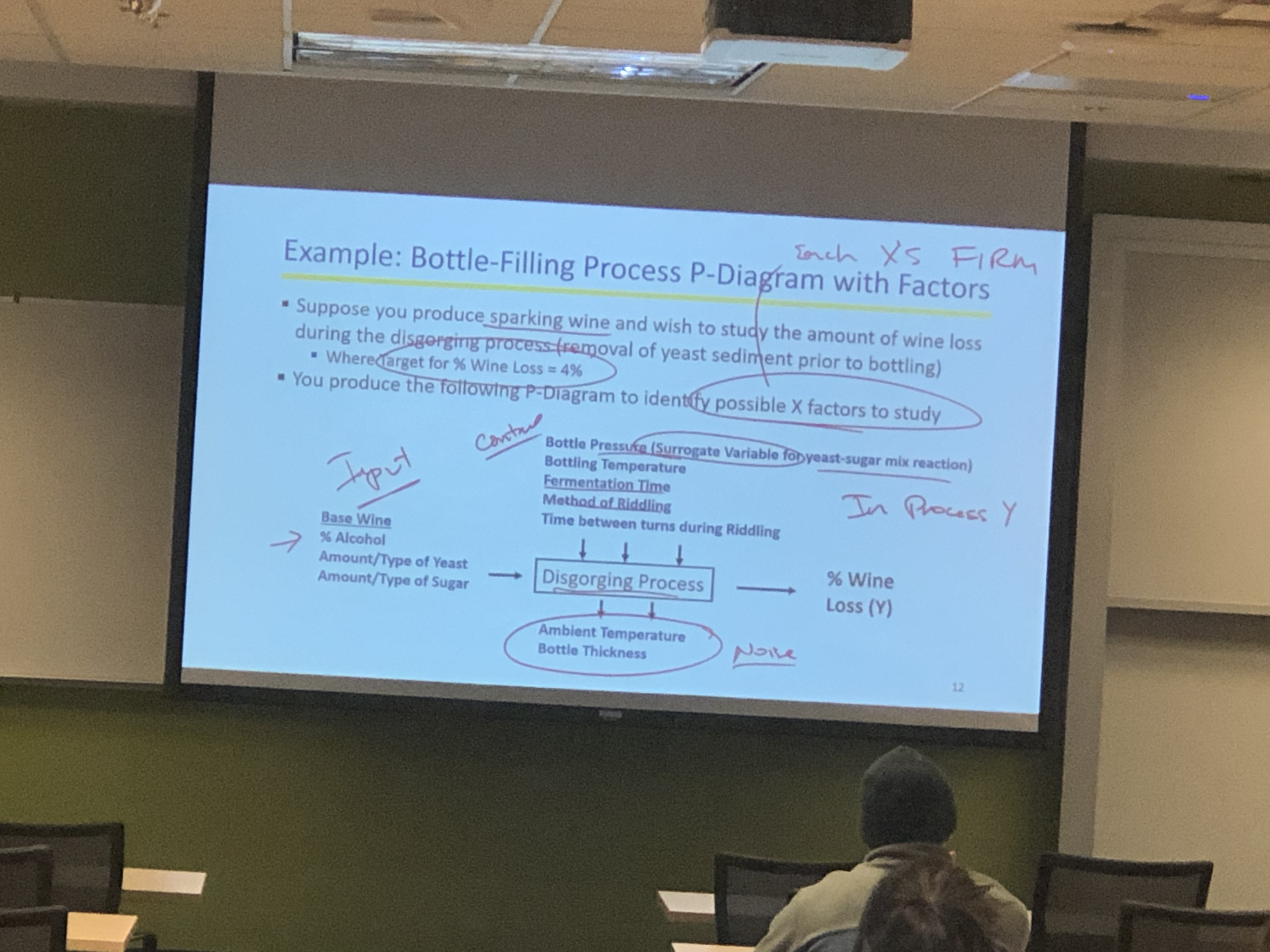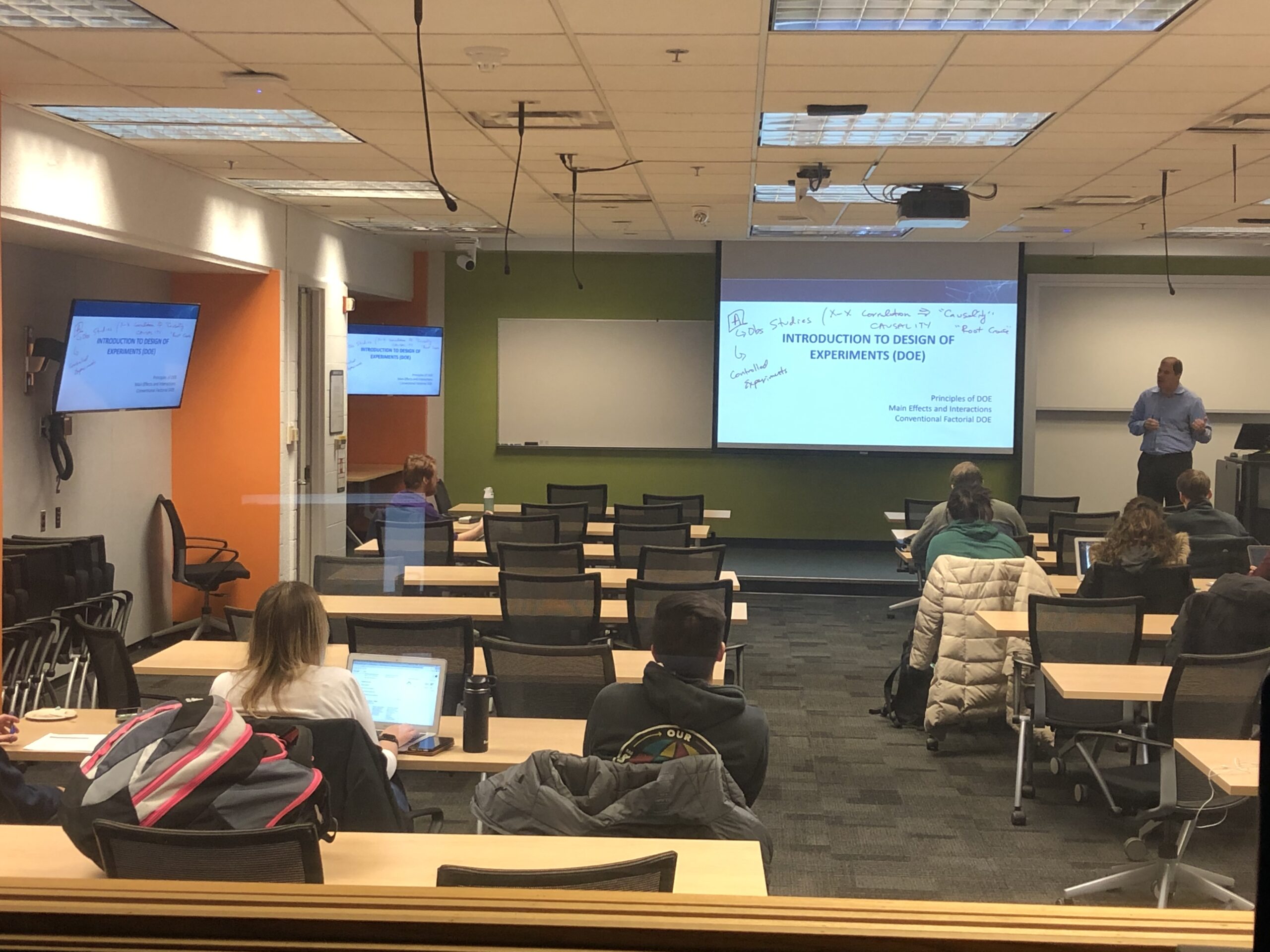November 16, 2019
Problem of Practice
How does incorporating discussion boards and group work in a graduate level online course affect students’ career readiness in the form of written communication, collaboration, and adaptability in Engineering?
How does the level of engagement with discussion boards in a graduate level online course affect students’ career readiness in the form of written communication, collaboration, and adaptability in Engineering?
Part 1
With a focus on Graduate level students in my research study, I decided to observe a Graduate level live classroom. This professor is potentially someone I could partner with during the research project and who also teaches online. My goal was to be able to see how the professor’s online courses compared to the residential courses at the University.
Part 2
Date: November 14, 2019
Site: University-Level Undergraduate Engineering Course
Observations
This week I observed 60 minutes of a lecture on the design of experiments at the University-level. The topics of this particular session included:
- Overview of Design of Experiments (DOE)
- Elements of Experimentation Design
- Main Effects
- Factor Interactions
- Two Factor Experiments
In regards to semester timing, the students have just passed the mid-term. There is a face-to-face and an online section of the course. This course is recorded using lecture capture and posted for both sections to review.
Setting: The classroom was set-up in rows with moveable tables and chairs. There were 3 TVs showing the session’s PowerPoint on each side for students in the back of the class to see the lecture easier. There was a white board and a projected screen at the front of the classroom. The front screen showed the PowerPoint for the lecture and the instructor lectured from the front of the class at a podium. The podium had a desktop, Wacom tablet, second monitor, and a stylus pen. The classroom is set up to be recorded with lecture capture. There are cameras pointed at the instructor and the class. The instructor wears a microphone and there are microphones hanging from the ceiling throughout the classroom.

Lecture: The instructor started the session by going over the topics for the day. The PowerPoints had all of the information on each slide, but the instructor would add in notes to elaborate the information by using the stylus pen. When the instructor wanted the class to focus on a certain item, he would use the stylus pen to circle and underline.

He would also add math equations on the side of the PowerPoints that went along with the topics. The instructor provided real-world application examples of the topics he was covering and explained how these related. He would often stop after covering a concept and ask “how are we doing so far?” He would also ask questions such as “what happens next” or “what does this mean?” It was obvious the instructor was reading the room for understanding because he would add more examples or elaboration for certain concepts.
Because the course is being recorded, the instructor would stay close to the podium to ensure the best experience for online students. The TV in the back of the room showed what the instructor looked like on camera to help him identify where he could and could not walk. When students asked questions or answer questions, the classroom microphones were turned on.
Comparing to an Educational System
Being that this is a classroom, this course is part of a larger educational system. Each section of this course is taught differently. There is a tightly-coupled approach to the concepts that must be covered in the course, but a very loosely-coupled approach in how it is taught. Not all of the sections have online components like this one. The components of the classroom is tightly-coupled due to having to be recorded for online courses. However, the set-up of the classroom is loosely-coupled. Because of the moveable chairs and tables, each class could be set up in groups, rows, u-shaped, etc.
Part 3
Apple, M. W. (1992). The text and cultural politics. Educational Researcher,21(7), 4-19.
Summary:
Textbooks and curriculum choices are often driven by majority groups. Because of this, there are often bias in them created by power struggles in cultures. In fact, textbooks are often published based on certain markets (Apple, 1992, p. 4). Often times, states in the south have state-wide textbook adoption. Due to the funding created by this, “texts made available to the entire nation, and the knowledge consider legitimate in them, are determined by what will sell in Texas, California, Florida, and other large textbook-adoption states” (p. 6). For example, certain history lessons are focused from one perspective only. When negotiations occur to add in new perspectives, they are included in a “small and often separate section” with little-to no elaboration (p. 8). The author reiterates throughout the text that the writing of and choice of textbooks can “transform the entire social space” by creating “entirely new kinds of governments, new possibilities for democratic political, economic, and cultural arrangements (p. 8).
Remember:
- Students should not accept exactly what they read and learn in school at face-value. This is often full of bias and may even be written from one social perspective.
Part 4
- During data collection, since I have a plan of adding a scale to the level of engagement in discussion boards, it might be a good idea to compare this to the post-survey results.
- Curriculum is often biased based on majority groups. Does student-to-student interactions in online courses benefit every student?
